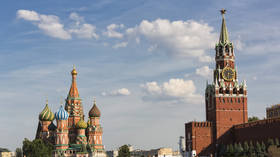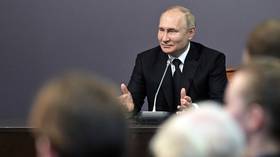
In the next 10-15 years, the country’s growth rate will slow, according to the Russian Academy of Sciences

© Getty Images / Westend61
The growth potential of the Russian economy will be limited to 1% until 2035, since the factors that contributed to GDP growth earlier have now been exhausted, experts from the Institute for Economic Forecasting of the Russian Academy of Sciences (RAS) have warned.
According to the institute’s report, which was seen by Vedomosti business daily, over the past decade, Russia’s economic growth has been determined by the rate of increase in exports. Average annual GDP growth was reportedly around 1%, while exports grew by 2.5% annually.
The RAS noted the significant impact of strong investment on the growth of the Russian economy in 1999-2008. The increase in investments in the economy was driven by rapidly growing export earnings, which made it possible to meet demand in the face of a strengthening ruble, it wrote.
After overcoming the 2008 global financial crisis, the growth rate of the economy slowed, which was reportedly associated with the stagnation of foreign income and the exhaustion of opportunities to stimulate demand due to the weakening of the national currency.
The analysts warned that in the next ten years, the average annual growth rate of exports may drop to just 2% in the face of reduced energy supplies abroad. Increasing non-energy exports will allow foreign investment in Russia to increase by 1.5% each year over 2024-25. However, this will not be enough to accelerate economic growth, the RAS argued.

Read more
Its experts believe that average annual GDP growth in Russia will be 0.5% until 2025, climbing to 0.8% in 2026-30, and to 1% in 2031-35. This scenario assumes that the price of Russian Urals crude blend stands at $70 per barrel until 2030, rising to $76 per barrel in the following five years.
The ruble exchange rate was forecast to be around 70 rubles per dollar until 2025, and 73 rubles per dollar for the next ten years. Oil production will remain at around 500 million tons per year, while gas output is expected to be 700 billion cubic meters up to 2035, the RAS wrote.
At the same time, the possibilities for fiscal, monetary, and exchange rate policies to accelerate economic growth are limited both in terms of duration and the scale of the impact, according to the study.
In order to reverse the trend of low economic growth, the RAS economists called for more focus on developing Russia’s domestic market, with more investment in sectors such as agriculture, passenger transport, and housing construction.
The Russian authorities have a more positive outlook for the economy in the coming years. Prime Minister Mikhail Mishustin has predicted that by 2024, the Russian economy will be able to overtake developed countries in terms of growth.
For more stories on economy & finance visit RT’s business section




